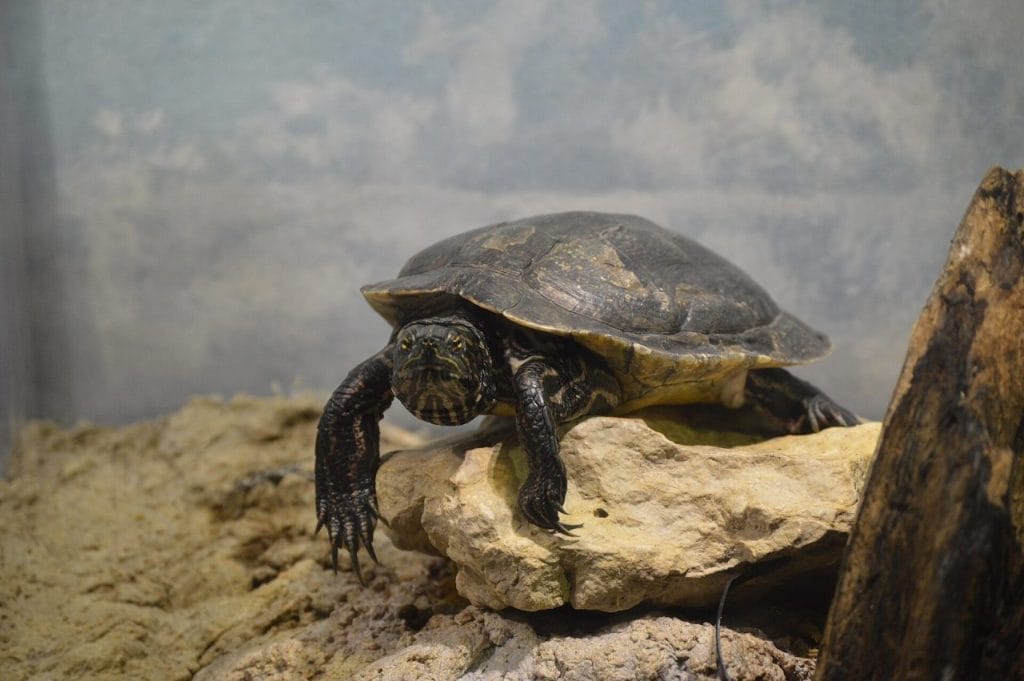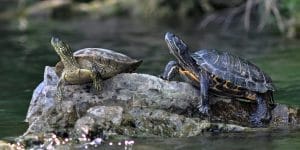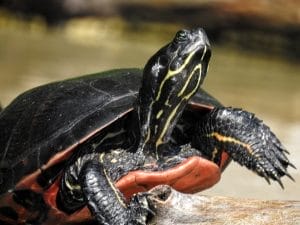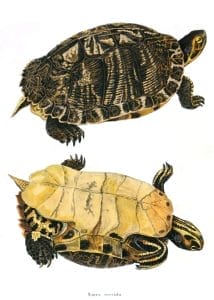Pseudemys gorzugi (Rio Grande Cooter)
Home > Turtle Database > Pseudemys gorzugi (Rio Grande Cooter)

Pseudemys gorzugi, also called the Rio Grande Cooter, is a freshwater turtle mostly found in the southwestern United States and parts of Mexico. It’s known for its colorful shell markings and love for sunbathing on riverbanks.
Native Turtle Species Map – Find Turtles by Region
Scientific Classification
Kingdom: Animalia
Phylum: Chordata
Class: Reptilia
Order: Testudines
Family: Emydidae
Genus: Pseudemys
Species: P. gorzugi
Common Names
Rio Grande Cooter
Western River Cooter
This Hilarious Turtle Book Might Know Your Pet Better Than You Do
Let’s be real—most turtle care guides feel like reading a textbook written by a sleep-deprived zookeeper.
This one’s not that.
Told from the snarky point of view of a grumpy, judgmental turtle, 21 Turtle Truths You’ll Never Read in a Care Guide is packed with sarcasm, sass, and surprisingly useful insights.
And hey—you don’t have to commit to the whole thing just yet.
Grab 2 free truths from the ebook and get a taste of what your turtle really thinks about your setup, your food choices, and that weird plastic palm tree.
It’s funny, it’s honest, and if you’ve ever owned a turtle who glares at you like you’re the problem—you’ll feel seen.
Identification
Description
This turtle has a dark green to olive shell with yellow to orange markings on the carapace. The plastron is pale yellow, often without markings. Its skin is dark with fine yellow stripes, especially visible on the neck and limbs. Adults can reach up to 12 inches in shell length.
Sexual Dimorphism
Males are generally smaller with longer claws and thicker tails. Females are larger, with shorter claws and smaller tails.
Check more turtles from the Pseudemys genus
Native Origin and Distribution
Geographical Range
This species is found in the Rio Grande River basin, covering southern New Mexico, western Texas, and northeastern Mexico.
Preferred Habitat
Rio Grande Cooters prefer slow-moving rivers, streams, and spring-fed pools with soft bottoms and plenty of aquatic vegetation. They’re often seen basking on rocks or logs near water.
Behavior
Feeding Habits
They are mainly herbivorous, feeding on algae and aquatic plants. Young cooters may also eat insects, small fish, and snails.
Predators
Common predators include raccoons, birds of prey, and large fish. Eggs and hatchlings are especially vulnerable.
Reproduction
Breeding Season
Mating usually takes place in spring, from March to May.
Reproductive Method
Females lay 5 to 20 eggs in sandy or soft soil near water. Hatchlings emerge in late summer or fall.
Conservation
Extinction Status
Listed as Near Threatened by the IUCN.
Threats
Habitat loss due to water diversion, pollution, and urban development. Invasive species and human disturbance also pose risks.
Conservation Measures
Protected in parts of its range. Efforts focus on habitat protection and water quality management.
Economic Importance
Not commonly used in trade, but it plays a role in local ecosystems by helping control aquatic vegetation and algae. Sometimes kept as a pet, though not widespread.
Interesting Facts
Pseudemys gorzugi can spend long periods basking in the sun, often stacked on top of each other.
They have strong jaws for crushing plant material, and their diet helps keep waterways balanced.

About Author
Muntaseer Rahman started keeping pet turtles back in 2013. He also owns the largest Turtle & Tortoise Facebook community in Bangladesh. These days he is mostly active on Facebook.














